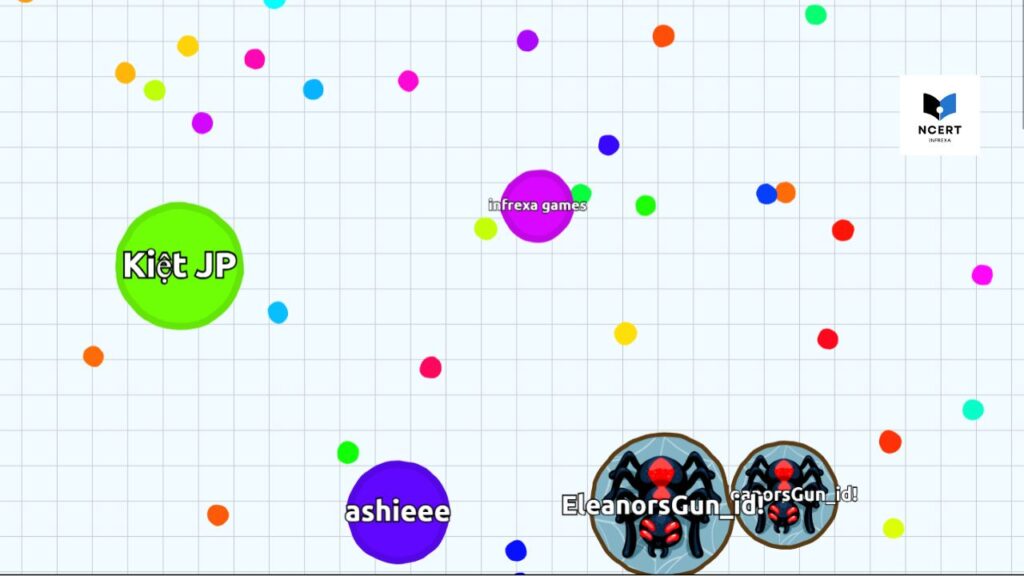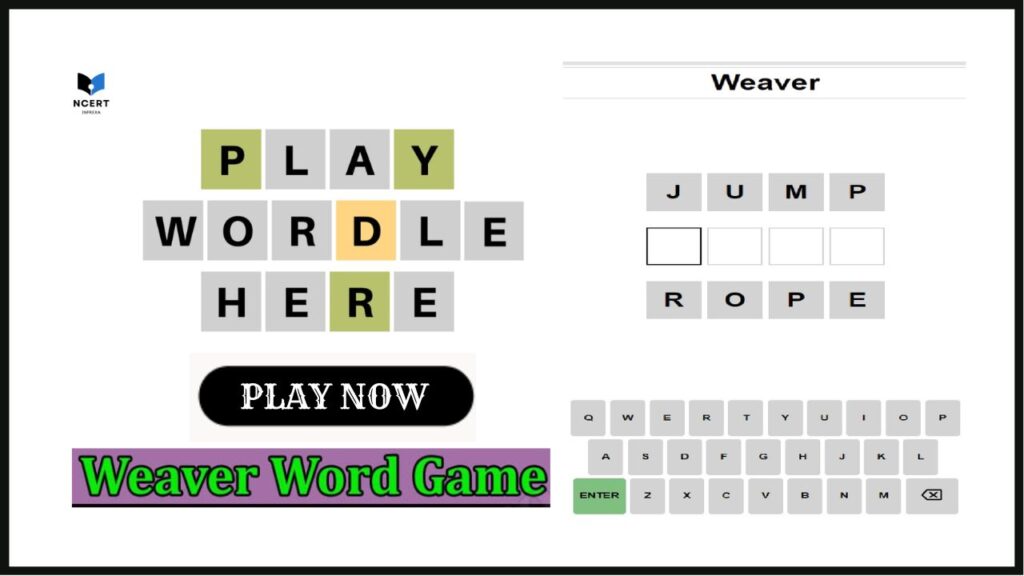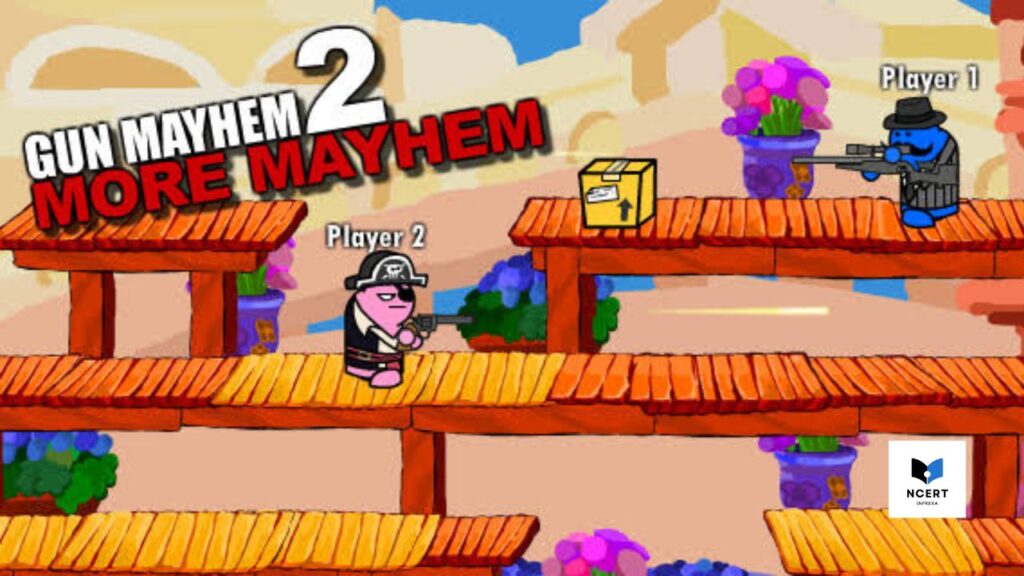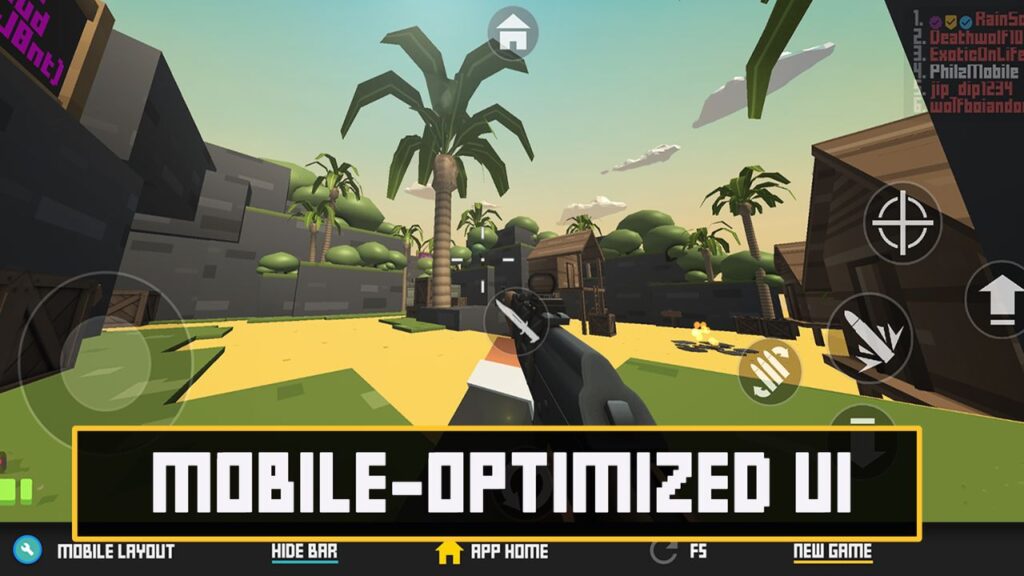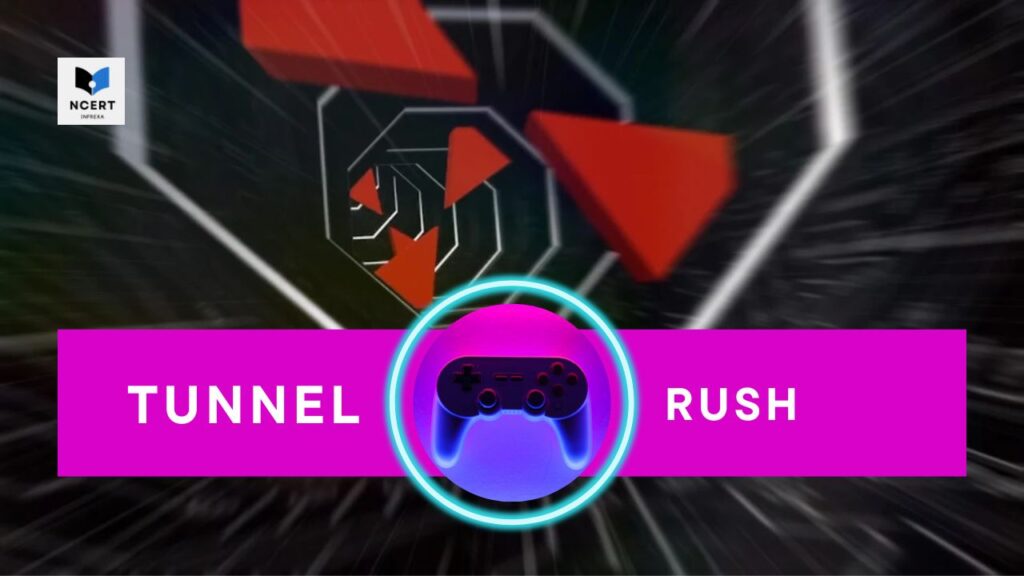Agar.io is a browser-based multiplayer game developed by Matheus Valadares in 2015. It became widely popular for a time, gaining attention through YouTubers and streamers. Although it features a simple design with circles moving on a grid, the game played an important role in starting the trend of “.io games” that came afterward.
How the Game Works
When you start Agar.io, you control a small cell on a large map filled with pellets (“agar”). By moving your cursor, you guide your cell to eat these pellets and smaller players to grow in size. The twist is that the larger your cell becomes, the slower you move, which makes survival harder.
Two key mechanics make the game more strategic:
- Splitting (Spacebar): When I first started, I used to split constantly, thinking it was the fastest way to grab smaller cells. But half the time, I’d just end up getting eaten by a bigger player lurking nearby. Over time, I realized splitting only works when you’re confident your target has nowhere to run – like when they’re trapped against the map edge or a virus. If you miss, you’ve basically handed over half your mass to the enemy.
- Ejecting Mass (W): At first, this felt pointless – why give away part of yourself? But in team play, it becomes a game-changer. I’ve used it to feed a teammate who’s in a better position to defend me, and I’ve also used it to trigger viruses strategically. For example, ejecting mass into a virus can make it split, forcing a massive opponent to break into smaller, vulnerable chunks. Those moments are the difference between being hunted and turning the tables.
Popular Modes
While there are several variants, these three are where you’ll spend most of your time. Your strategy needs to change drastically depending on which one you choose.
Free For All (FFA)
This is the purest test of skill. With no allies, it’s every player for themselves. My advice for FFA is to play patiently. It’s tempting to be aggressive, but as I learned, survival is often about letting bigger players fight each other while you clean up the mess. This is the mode where the “don’t grow too fast” tip is most important.
Teams
Here, players are divided into colored factions fighting for map control. This is where the ‘W‘ key to eject mass becomes a vital team-play tool. I’ve won games by feeding a teammate who was just barely smaller than a rival, helping them secure a game-changing eat. Communication and watching your teammates’ backs are key.
Party Mode
This mode allows you to join a private match with a code, which is why it became a hit in schools. The dynamic here is completely different. You can coordinate strategies with friends, but you also face organized opponents. It’s the most social and unpredictable way to play.
Tips and Tricks
- After spending hours playing both the browser and mobile versions of Agar.io, I discovered several strategies that made a noticeable difference in my survival rate. One important lesson was to avoid growing too fast, too soon. Becoming the biggest cell early on may feel powerful, but it also turns you into a prime target for every other player. I found that staying mid-sized and agile often worked better, allowing me to slip between larger predators and wait for them to collide or eliminate each other.
- Another realization was that viruses aren’t just obstacles. Initially, I saw the spiky green viruses as hazards to steer clear of, but over time, I learned to use them as defensive tools. When a massive player was chasing me, hiding behind a virus often saved me. Once I became comfortable ejecting mass into viruses, I could even turn the tide of a match by splitting an oversized opponent into smaller, edible pieces.
- Finally, I learned that smart splitting always beats reckless splitting. In my early games, I used to split impulsively across the map to chase smaller cells, but that usually ended in disaster. Now, I only split when I’m sure the target can’t escape, typically when they’re trapped near a wall or corner.
These aren’t hidden tricks or secret tactics; they’re lessons learned through repeated failure and observation. Each loss helped me understand the game’s rhythm a little better, and over time, these small insights became the foundation of my survival strategy.
Alternative


